Mango has multiple uses. It can be consumed as fresh fruit, it can be cooked, frozen or dried. It can be eaten green, half ripe or fully ripe. During the harvest season, recipes appear in local newspapers and there are publications describing the uses of the fruit.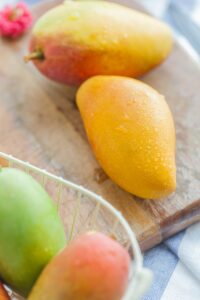
Green, half-ripe, or even ripe fruit can be used in baking pastries. Ripe or half-ripe mangoes make excellent cakes. Half-ripe fruit should be allowed to soften slightly and can be used fresh or as frozen slices. They can also be made into jam, jelly, salsa, pickles and butter.
Mangoes can be canned, using a similar process to other fruits. Ripe mangoes can be frozen. For this process, they should be peeled and cut into slices and syrup with or without lemon juice should be added. Whole, unpeeled mangoes do not freeze well. Juice with pulp from fibrous mangoes is used to make a type of jam or cuerito. Mango juice can be dried and powdered for use in foods for children and the elderly or for reconstitution as a beverage. Dried juice mixed with wheat flour is prepared as cereal flakes.
Ripe or green mangoes can be soaked in lemon juice and stored frozen as puree. Half-ripe or green mangoes are peeled and sliced and used as a filling for pies, used as a jelly or in a sauce to which milk and egg whites are added to make a sorbet. Green mangoes are peeled, sliced, boiled in water, mixed with sugar, salt, spices and then cooked with raisins or other fruits to make pickles. They can also be salted, dried in the sun and then used for pickling or pickling. Thin slices of green mangoes are seasoned with turmeric, dried and powdered to give a sour flavor to pickles, soups and vegetables.
Technology for peeling mangoes based on steam and lye is key in industrialization and nectar production. In this industry it is important to consider the most suitable cultivar types. Methods for dehydration of green or ripe mango slices by osmosis have also been developed.
Mango seeds are a surplus from industrialization. They can be prepared for eating. They are first soaked in water to remove astringency, then dried and ground to make flour, which is mixed with wheat or rice flour to make bread or pudding. Fat is also extracted from the seed, which is white, solid like cocoa butter, with the consistency of bait, edible and is used as a substitute for cocoa butter in chocolate.
The remaining husk from processing is a source of pectin. The tender leaves are cooked and eaten in Indonesia and the Philippines.
Nutritional Value
Mango compares favorably in nutritional value with fruits from temperate and tropical zones. Indeed, in tropical countries the fruit contributes greatly to a balanced diet. Large amounts of total solids are found in fresh fruit. Green fruit contains starches, which change to sugars as the fruit ripens. The sugar content is high compared to other fruits, ranging from six to twenty percent. The protein content is generally higher than that of other fruits, except avocado.
Mango is considered to be an excellent source of vitamin A. Vitamin C varies by variety; most Florida mangos are an excellent source of this vitamin. Mangoes are a source of thiamine and niacin, but contain only a small amount of riboflavin. Mangoes contain a reasonable amount of calcium and iron, but are a poor source of other minerals.
Pineapple is a crop that can be planted all year round, especially on moist soils, but the best time is always in autumn. 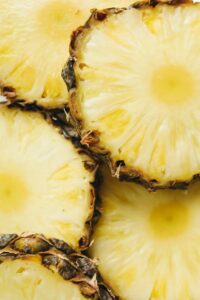
The most common way to reproduce it is using the shoots of the central stem, considering that the best ones come from the basal part of it, although the buds of the distal stem or the crown of bracts of the fruit are also usable.
Reproduction from seeds is rare. Basal buds develop, fruit and naturally give rise to new stems. The apical meristem (better known as crown), the pendulous buds (also known as cocks) and the offshoots of the pendulous bud (called cloves) are the different types of shoots.
From early summer the main harvest begins and lasts until early fall. A basic rule is to harvest the fruit when ripe, because once cut it does not continue its ripening process.
Pineapple is used for many things, but mainly for fresh and canned consumption. It is usually used as a dessert and as a sweet ingredient in oriental food. When the pineapple is ripe, the leaves can be pulled off with a strong tug and the flesh is firm but flexible and the aroma is more intense at the bottom.
Due to the concentration of consumption and the cost of transporting the fresh fruit, many industrialized products are produced, with the use for juice and marmalade increasing. The juice is also used to produce pineapple vinegar. Pineapple is attributed several medicinal properties, highlighting the proteolytic enzyme called bromelain, which helps metabolize food. It is also known to be a diuretic, antiseptic, detoxifier, antacid and vermifuge. It is used as an aid in the treatment of rheumatoid arthritis, sciatica and obesity control, although these uses are still under study.
Mora de castilla or black mulberry is the most commercially important and the most cultivated in Ecuador, in lands that are between 2,500 and 3,000 meters above sea level.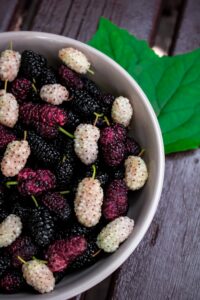
Mora de gato, grows in the lands of 3,000 meters above sea level. Mora silvestre, grows between 2,500 and 3,000 meters above sea level. Variety alie. Brought from California (USA) in 1987, it is grown to sell to other countries. They ripen quickly. They are shiny black, long, hard. The plant is strong and produces a lot. Arms variety. It is brought from Texas (United States). It is also for sale to other countries. It is very productive. Colombia has 7,007 hectares planted, of which 4,922 are of productive age. There are average yields of 15 tons per hectare, which means an annual production of 73,856 tons. Blackberry is a perennial , shrubby, semi-erect plant. With creeping or semi-erect stems with thorns, which emerge from the base of the plant forming clusters; usually there are male, female and whip stems. The fruit is an aggregate of small drupes, each with a seed inside; it can be of various sizes and colors ranging from red to purple when ripe; the plant has permanent flowering and fruiting, with production peaks every five or six months.
The strawberry plant is herbaceous and perennial. The root system is fasciculate, composed of roots and rootlets. 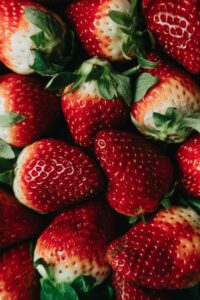
The former have vascular and suberous cambium, while the latter lack it, are lighter in color and have a short life span of a few days or weeks, while the roots are perennial.
Roots undergo a physiological renewal process, although influenced by environmental factors, soil pathogens, etc., which break the equilibrium. The depth of the root system is very variable, depending, among other factors, on the type of soil and the presence of pathogens in it. Under optimum conditions they can reach 2-3 m, although normally they do not exceed 40 cm, most of them (90%) being found in the first 25 cm. The stem consists of a short cone-shaped axis called “crown”, on which there are numerous foliar scales.
The leaves appear in rosette and are inserted in the crown. They are long petiolate and provided with two reddish stipules. Their blade is divided into three pedunculate leaflets, with serrated edges, they have a large number of stomata (300-400/mm2 ), so they can lose large amounts of water by transpiration. The inflorescences can develop from a terminal bud of the crown, or from axillary buds of the leaves. The branching of the inflorescence can be basal or distal. In the first case there are several flowers of similar size, while in the second case there is a terminal or primary flower and other smaller secondary flowers. The flower has 5-6 petals, 20 to 35 stamens and several hundred pistils on a fleshy receptacle. Each fertilized ovule gives rise to an achene fruit. The development of the achenes, distributed over the surface of the fleshy receptacle, stimulates the growth and coloration of the receptacle, giving rise to the “fruit” of the strawberry.
The passion fruit is a climbing plant, vigorous, woody, perennial, with branches up to 20 meters long, has green, ribbed and glabrous stems, with axillary tendrils that are spiral and longer than the leaves.
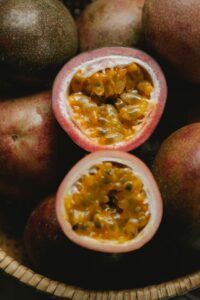
It has green, grooved and glabrous stems, with axillary tendrils that wind in a spiral shape and are longer than the leaves. It is a globose or ovoid berry of color between intense red to yellow when ripe, the seeds with fleshy aril very aromatic, measure 6 to 7 cm in diameter and between 6 and 12 cm in length.
The fruit consists of 3 parts. Exocarp: It is the peel or rind of the fruit, is smooth and is covered with natural wax that gives it shine. The color varies from green to yellow when ripe. Mesocarp: It is the soft porous and white part, formed mainly by pectin, it is approximately 6mm thick and, in contact with water, it softens easily. Endocarp: It is the envelope (sac or aril) that covers the dark brown seeds. It contains the juice of opaque yellow color, quite acid, very aromatic and of pleasant flavor.
The passion fruit is a source of proteins, minerals, vitamins, carbohydrates and fat, it is consumed as fresh fruit, or in juice. It is used to prepare soft drinks, nectars, jams, ice creams, puddings, preserves, etc. According to the Institute of Food Technology of Brazil, the oil extracted from its seeds could be used in the manufacture of soaps, inks and varnishes. The general composition of passion fruit is as follows: peel 50-60%, juice 30-40%, seed 10-15%, the juice being the most important product. The ascorbic acid concentration in passion fruit varies from 17 to 35 mg/100g of fruit for red passion fruit and between 10 and 14 mg/100g of fruit for yellow passion fruit. The yellow-orange coloration of the juice is due to the presence of a pigment called carotene, which provides the organism that ingests it with a good amount of vitamin A and C, as well as mineral salts such as calcium, iron and fiber. Each 100 ml of juice contains an average of 53 cal, varying according to the species.
Vegetables are all the plants that we grow in gardens, farms or greenhouses. Thus, their definition depends on what we can or want to grow in our garden. 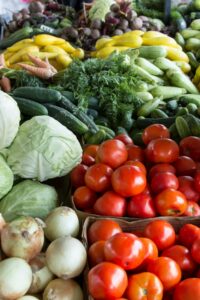 For example, they can be vegetables such as lettuce, spinach and peppers; medicinal plants such as mint and oregano; leguminous plants such as peas; and some fruits, such as raspberries and melons. In this manual we speak of vegetables to refer to our crops, and we also speak of fruits and vegetables to refer to the foods in that group.
For example, they can be vegetables such as lettuce, spinach and peppers; medicinal plants such as mint and oregano; leguminous plants such as peas; and some fruits, such as raspberries and melons. In this manual we speak of vegetables to refer to our crops, and we also speak of fruits and vegetables to refer to the foods in that group.
Not all fruits and vegetables can be grown in gardens, due to space or soil quality, but we will keep them in mind throughout this guide to give examples and advice. Vegetables are very important for food and good nutrition of the family, their leaves, fruits, roots, stems and flowers are consumed to meet the needs of our body, for its high content of minerals, vitamins and proteins that contribute to improve and maintain good health.
They are a good source of vitamins, minerals, fiber, antioxidants, phytochemicals and provide an important dose of water to the body. They contribute to maintaining a healthy weight because they are low in calories. All these properties help protect health, maintain healthy skin, improve digestion, prevent infections and reduce the risk of cancer and heart disease. Depending on the season and the area of the country, we can find these fruits and vegetables: Vegetables: Chard, artichoke, eggplant, broccoli, mushrooms, cauliflower, asparagus, spinach, green beans, carrots, pumpkin, Italian pumpkin, beet, onion, tomatoes, chicory, garlic, celery, cochayuyo, lettuce, paprika and cabbage.
Social Action Linked To The Project
Colombia’s rural economy remains insufficiently diversified. There is, of course, a growing mining activity, services of different nature that are provided from the towns and in some areas an important rural tourism has been developed. Some rural activities are, in any case, underdeveloped, particularly fishing and aquaculture. For this reason, the fate of rural areas has been closely linked to that of the agricultural sector. Linked to the business development that we are initiating, we must also think of the regions that participate in this idea, and therefore must be the object of social development in their environment, for which, in addition to ensuring the purchase of harvested products, they will be beneficiaries of a joint social action, referring to their education, health, recreation and clothing, as basic needs unsatisfied by the conglomerate of people who develop in the regional environment.
The adequacy of the educational, health and recreational infrastructure will be a joint work with the regional entities, especially with the Community Action Boards, for the improvement and better quality of life of the neighbors of each sector.
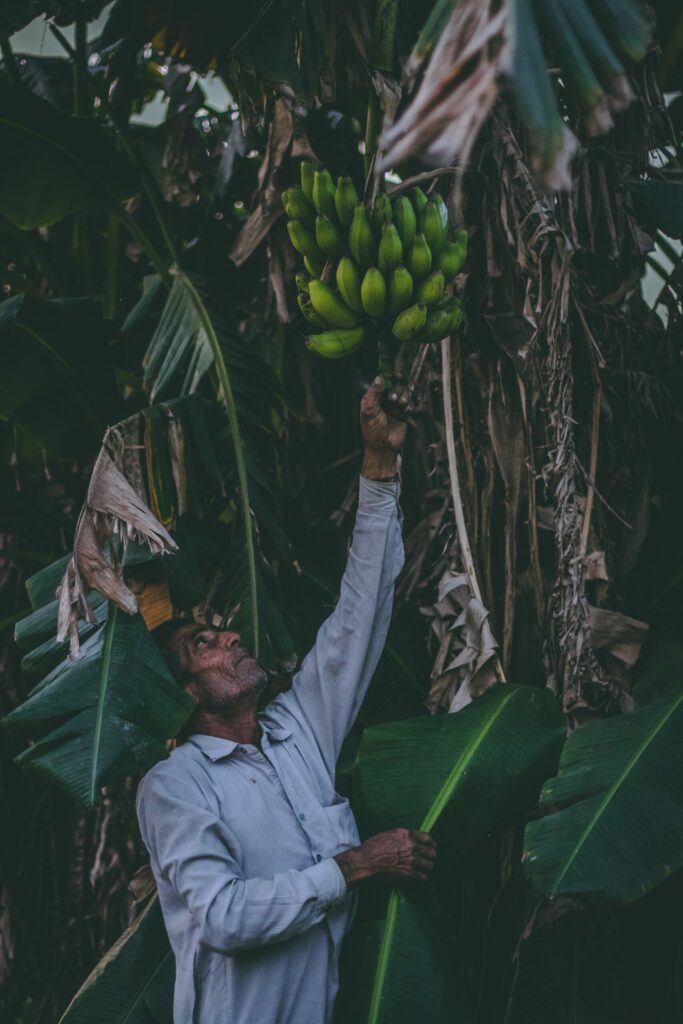
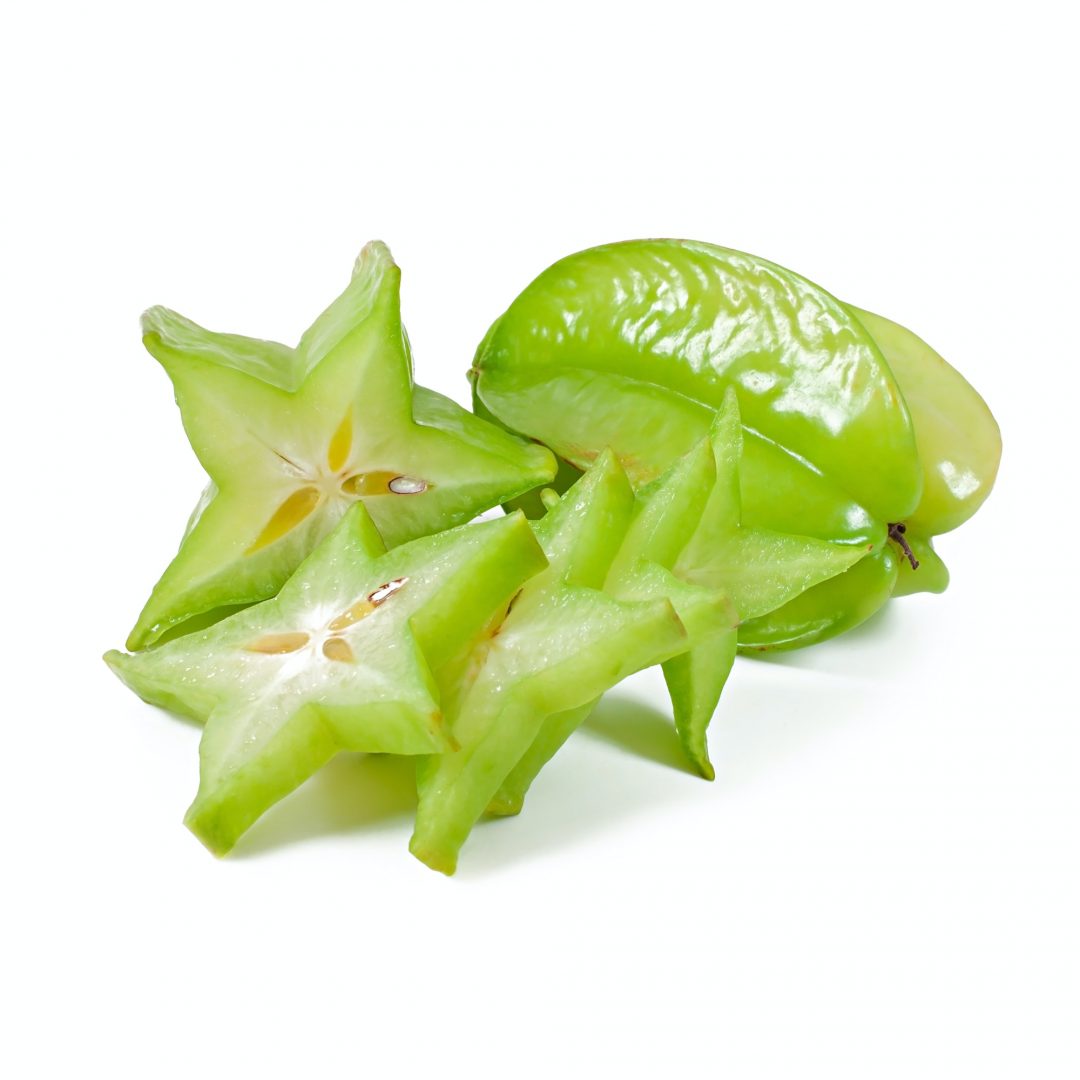
Stay up to date with what’s happening at #SocialFoodBank!
Newsletter

